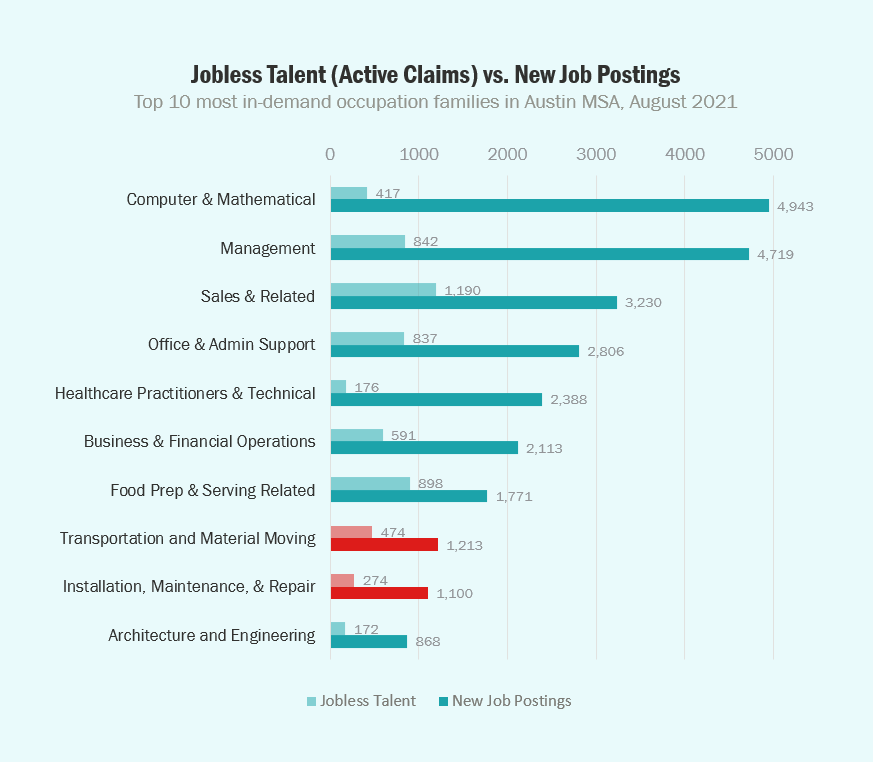3-minute read
In this letter — 1 big thing: A nationwide truck driver shortage underscores that workforce training will be a critical component to filling the local talent pipeline.
🚨 Situational awareness: In August, the average rent price in Austin hit $1,511, which represents an 18% increase over the year before.
- To improve Austin’s affordability, the Hire Local Plan (the next iteration of the Community Workforce Plan) needs your input to help improve economically disadvantaged residents’ access to better economic opportunities.
- To give input or sign up for one of our live weekly feedback sessions, visit our microsite.
Were you forwarded this email? Sign up to receive my weekly updates here.
In partnership, Tamara.

1. Tesla expands hiring in Austin. Workforce Solutions can help get your foot in the door
A nationwide truck driver shortage underscores that companies are hiring but there’s not enough qualified applicants to fill the positions. Workforce experts say that workforce training will be a critical component to fill the local talent pipeline.
Driving the news: Community Truck Driving School — a WFS training partner — tells KXAN that because of supply chain issues, companies that once only hired experienced truckers are now taking their students straight out of school.
Big picture: According to the U.S. Bureau of Labor Statistics, as of July, roughly 33,000 trucking industry jobs remained unfilled from pre-pandemic levels. There was already a shortage before COVID-19.
Zoom in: Local demand for workers in the transportation industry is projected to rise, according to a new WFS report.
- Currently, there are 32,660 workersin the Austin metro Transportation & Warehousing industry.
- By 2030, there will be 40,000 workers, according to a JobsEQ 10-year projection.
- Of note: This forecast does not include the swell of skilled transportation and trades workers needed to carry out projects related to the infrastructure bill and local transit expansions.
- The sub-industry with the highest demand is General Freight Trucking. Its highest-demand occupations fall under the Transportation and Material Moving category, including heavy tractor trailer drivers, cleaners of these vehicles, bus drivers, and vehicle system inspectors.
Yes, and: According to WFS, for transit-related occupations, there is 3x more hiring demand in the Austin metro than the supply of unemployed talent in Travis County, which is the agency’s service area.
- Roles affected by these wide talent gaps include Transportation and Material Moving jobs. Also impacted are critical skilled trades jobs in installation, maintenance, and repair.
Key ways we’re helping meet transportation industry demand:
- WFS continues to fund training for direct and related transit occupations, including truck drivers and mechanics.
- Training providers we partner with include Austin Community College, Goodwill, Community Truck Driving School, and Changing Lanes.
- In FY20 and FY21, WFS enrolled 331 skilled trades and transportation trainees in our programs.
- WFS has partnered with two transit companies — honored as Upskilling HEROES last year — for Incumbent Worker Training grants.
- Austin Western Railroad – Watco Companies seized the opportunity to grow their employees through a career ladder approach adapted to complement their company culture.
- Arrive Logistics is training its staff to meet increased operations and shifted workloads to deliver PPE products.
On our radar: The $39B allocated in thebipartisan infrastructure bill is the highest level of transit funding in program history. Oct. 31 is the non-binding deadline set to pass this historic legislation.
- Austin residents have also recently approved a $7.1B investment in Project Connect during the pandemic. Austin Mayor Steve Adler noted in The Hill that, in addition to offering a more accessible transit system, this investment is set to expand the labor force with well-paying jobs through its construction, the additional economic development it generates, and for transit workers who operate and maintain transit.
Bottom line: Qualified workers earnwhat they learn, and employers are willing to pay for workers with the right skills.
- For those residents motivated to take these positions but lacking the required skills, WFS can assist residents to move higher — into higher-skilled jobs offering higher wages with local employers.

